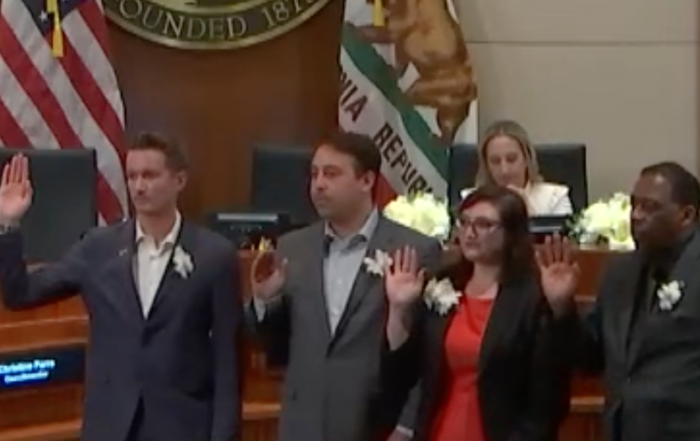On Tuesday evening, the West Hollywood City Council heard Francisco Contreras, the city’s Long Range Planning Manager, and Jerry Hittleman, Senior Contract Planner, present a final version of the city’s Sixth Cycle Housing Element for the period of 2021-2029. Contreras called the housing plan an “ambitious policy document” that tackles the city’s challenges with “housing affordability, equity, and sustainability issues” and “facilitates the preservation and development of housing in the city.”
Contreras also acknowledged that the plan meets the State Housing and Community Development Department’s (HCD) Regional Housing Needs Assessment (RHNA) allocation assigned to the city of West Hollywood for housing construction during this eight-year period. That number of new housing units is a base of 3,933 new units developed, with an attached affordability buffer required of 15 percent, taking the new housing required to 4,484 units.
The numbers for the Sixth Cycle mark a steep increase for most California cities after several cycles of lowball expectations from the state. Failure to meet the numbers and comply with HCD’s expectations will come with great consequences for cities, starting with a loss in state financial assistance to support affordable housing development.
The city council submitted several directives to city staff to include in the revised Housing Element, including:
- Maximize the development of affordable and median-income housing
- Identify ways rezoning could assist in that goal
- Consider the redevelopment and viability of large, long-standing parcels
- Assessing the environmental impact of reallocating housing across the city
The city asked for a one-year extension from the state to complete these moves and asked HCD to consider allowing co-living arrangements, micro units, and other housing types to count towards the RHNA numbers.
Councilmember Lauren Meister asked staff if commercial projects were required on the first floor of mixed developments. John Keho, the city’s Director of Planning and Development Services, confirmed that this was the current requirement, though housing can go behind first-floor store frontage. However, he agreed with former councilmember Steve Martin’s public comment that it was worth taking a look at the policy. He agreed with Martin that there isn’t as much demand for first-floor retail as there has been in the past given the escalation in online shopping.
Meister declared she would support the new draft Element in part to regain control of the housing development process from the “Builder’s Remedy” loophole. The Builder’s Remedy requires cities without an approved Housing Element to approve any development project that promises at least 20 percent of its units will be low-income, or 100 percent moderate income, without any public process or debate.
Councilmember Chelsea Byers was upbeat, saying, “There’s a lot in this plan that I’m really excited for. Knowing that we’ll have 6,000 new West Hollywood residents at the end of it is exciting. Knowing that we have ambitious housing goals that we’re reaching is exciting.” Byers also spoke to the generational responsibility the council has to meet the housing challenge instead of passing it on as other generations have.
“There are aspects of the plan that I’m not entirely in agreement with,” countered Councilmember John Heilman, who fears some aspects of the Housing Element won’t bear out as feasible. But at the same time, he also said he found it “irresponsible” that the city is operating without an approved Housing Element, though he was quick to avoid blaming staff. He continued, “Whatever the problems with previous drafts, it is essential the city always has a Housing Element in effect that has been approved by the state.” He seconded Meister’s concern about things continuing under the Builder’s Remedy, saying the City of Santa Monica, which struggled to get approval for its Housing Element, has already been forced to approve upwards of 4,500 units through the loophole.
Mayor Pro Tem John Erickson felt that previous drafts of the Element didn’t measure up and seemed more befitting a city like South Pasadena than West Hollywood. But he reserved some blame for the state. “They are dealing with a number of cities that are not compliant,” he said, which has them working too slowly in Sacramento. He expressed confidence that the current draft would be approved by HCD.
The city council approved the updated Housing Element on a 5-0 vote. It will now be sent to HCD for approval or additional feedback.
Stay informed. Sign up for The Westside Voice Newsletter
By clicking submit, you agree to share your email address with Westside Voice. We do not sell or share your information with anyone.








